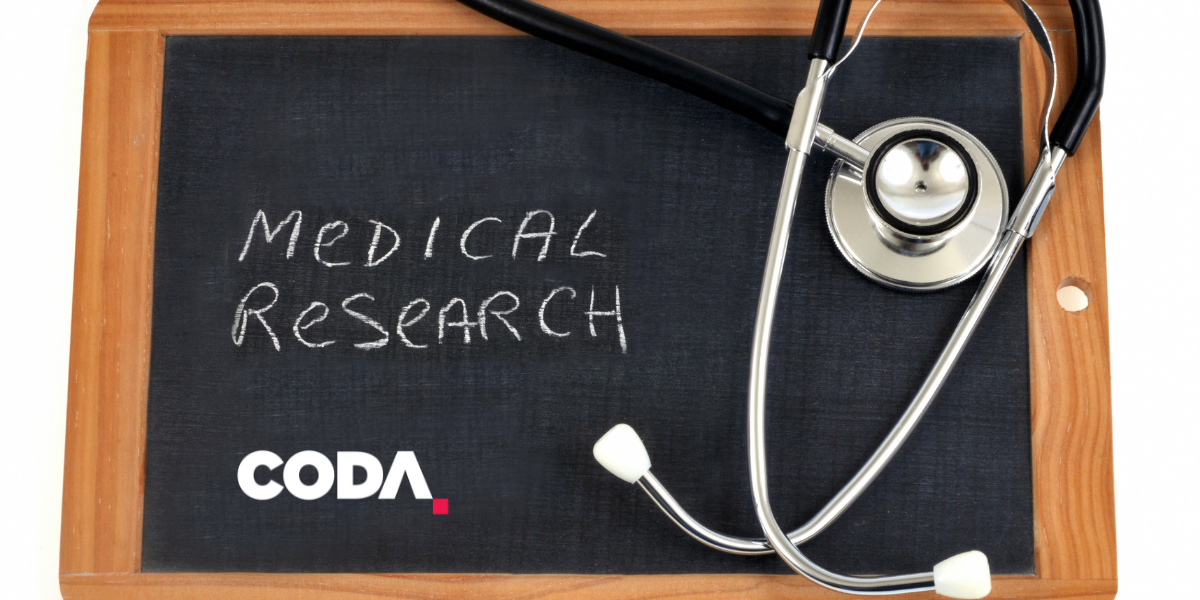Bias by design in medicine with Tarlan Hedayati
In the last episode of Carr’s Clinic, David Carr chats to Tarlan Hedayati about bias in medicine.
A patient comes into the emergency department and they are complaining of shortness of breath.
Here, we take the typical measurements including heart rate, blood pressure, temperature, rest rate and O2 sat.
Once the patient has been treated, they want to go home and we rely on vital signs and devices such as a pulse oximeter to determine if it is safe to do so.
But… the pulse oximeter measurement is flawed and biased. As a result, it also has the potential to harm your patients.
Tragically, for non-white people, the pulse oximeter is inaccurate. Its measurements are not reliable – and clinicians should be aware of this.
The consequences of this are devastating. Therefore, these devices need to be reviewed to account for the bias in their design.
What’s even more concerning? Tarlan encourages us to consider what other sources of racial bias we might already have in clinical medicine that we haven’t even considered or acknowledged yet?
Tune in to a great discussion with David Carr and Tarlan Hedayati on bias by design in medicine.
For more like this, head to our podcast page. #CodaPodcast
– (David) I’m super excited. I’m super excited about the release of Carr’s Coda Clinic. I had the absolute pleasure of interviewing Sara, Tarlan and Swami and I can’t wait for you to hear the sections for those who missed it. But what I’m even more excited about is that Coda22 is back. Now, I’m hoping I have a haircut by then and I’m hoping I’m going to see you in Melbourne on 3-6 April 2022. Book off your time. We’re working on the program, It’s coming together. It’s going to be an unbelievable time. It’s a reunion. We all need this. We all need you to be there. So take a look at codachange.org for details. I can’t wait to see you Down Under, in just under a year. See you soon.
Dr. Tarlan Hedayati. I have been looking forward to today. A legend, someone I couldn’t wait to talk to. Cook County’s finest, the chair of education, the big shot at every conference I get to hear. I get to talk to you today and I understand you have a beef? You have a problem? Tell me about it.
– (Tarlan) We’re about to get into it. So you know, bias by design. Let’s chit-chat a little bit.
– (David) Yeah, let’s talk about it.
– (Tarlan) I’m going to throw a case at you.
– (David) Okay, please do.
– (Tarlan) Tell me what you would do. All right, here we go.
– (David) Awesome.
– (Tarlan) So let’s say you’re working in the emergency department, or I think you guys call it emerge?
– (David) Emerge. Yeah, emerge. Up north. Emerge.
– (Tarlan) Emerge. Okay. Or A&E.
– (David) Perfect.
– (Tarlan) So let’s say you have a patient that comes in, they are complaining of some shortness of breath and you ask for triage vital signs. When I say triage vital signs to you, what measurements are you looking for?
– (David) Yeah, everything. Fortunately, we’re done with that pain vital… heart rate, blood pressure, temperature, rest rate, O2 sat. I love rest rate because the nurses always make it up, but sats are super important in that patient.
– (Tarlan) I’m so glad you said that. That’s what I wanted to hear. So, let’s say it’s a patient who’s coming in with an acute asthma exacerbation. So pretty bread and butter emergency medicine. You provide all your standard treatments. Their wheezing is better, they feel better and they want to go home. Do you have a threshold pulse oximeter measurement that is the level under which you would say, mm, I think I’m going to admit this patient?
– (David) Yeah. You know, barring all the social stuff and the fluff, probably somewhere under 94 and I get them to walk and if they’re not too low, I try to get them home if they have good follow-up.
– (Tarlan) Yeah. Perfect. Me too. So you know, 93%, I’m comfortable with too. So yeah, so we have a similar threshold. So let me tell you this, or let me ask you this. Let’s say that I told you that this vital sign, the pulse ox measurement in this dyspneic patient, that’s going to kind of help you figure out what the disposition is going to be, is flawed, is biased and could potentially harm your patient.
– (David) You’re screwed.
– (Tarlan)Yeah. We all are.
– (David) Big time. Yeah.
– (Tarlan) Even worse, your patient’s screwed. So let’s dig into this. So the pulse ox value is basically, you know, a percentage of the haemoglobin that’s saturated with oxygen, so in the arterial blood. That normally runs 94 to 100%. That’s why we all kind of have that threshold around 94%, under which we’re like, eh, I’m not comfortable with this. Now, do you know how a pulse ox works?
– (Davi) Do I have a phone a friend option?
– (Tarlan) Yeah. I’m your friend! Guess what? I’m your friend.
– (David) Okay, then tell me because I have no idea. I know it’s like some weird thing and there’s a red light and it pages the medicine resident and it tells you the answer.
– (Tarlan) Close. Close. So basically, the device shines a red light and an infrared light and it goes from one side of the finger, or if it’s on the toe, one side of the toe, or the ear and it measures how much of each of these lights, the red light or the infrared light, is detected on the other side, after it’s passed through and been absorbed by muscle, by bone, by blood, everything in between. It does this like magical calculation and comparison between the red light and the infrared light. Then it spits out this number at you that correlates with the arterial oxygen saturation. So pretty cool, right?
– (David) Yeah. Perfect. Continuous monitoring, easy, we always do this. Love it.
– (Tarlan) Yeah, we love it. But, here’s the problem. So what’s the first thing the light passes through?
– (David) Oh, you’re going over anatomy, aren’t you? Uh, the epidermis? I dunno, the skin?
– (Tarlan) The skin! I love it. Yeah. See, I’m just going to throw like softballs at you here.
– (David) Okay, you’re making me look good.
– (Tarlan) So the first thing the light passes through is skin. What we know and what we’ve known for a long time, is that the pulse oximeter is inaccurate in non-white people. So let that settle in. This is not an accurate measurement in non-white people, particularly at lower saturations, because these devices were designed and then tested with white people in mind.
– (David) So I’ve heard this lately, with all this extra care about monitoring and stuff like that. But, are you just saying this, or there’s actually papers and science about it?
– (Tarlan) There are papers, let’s get into it. So we have some recent data but you know, this is something that we’ve known for a long time. So when you dig back into the literature, you find anecdotal evidence and comments and various papers and it goes back to like the late 80s, 1990s, so a while ago.
– (David) Before evidence-based medicine?
– (Tarlan) Yeah. I think we had it back then too but we just sort of accepted it.
– (David) Ish.
– (Tarlan) Yeah. Ish. We just sort of accepted it, it was just kind of a line buried in the middle of a paper. Then, in 2005, a group of researchers got together and they were like, “Hey, let’s take a look at this and really dig into this.” So it was a group of physicians at the University of California in San Francisco, they designed a study specifically looking at pulse ox accuracy in 11 dark-skinned subjects and then 10 light-skinned subjects. They were all volunteers, all healthy and they used three different pulse ox models. What they did was, they had these volunteers inhale this like air nitrogen, carbon dioxide mixture and then they sort of tweaked the oxygen concentrations and then measured what the O2 saturation was on a pulse oximeter and what the measured O2 sat was on an ABG.
– (David) So basically, the REB allowed them to poison individuals, make them hypoxic and then compare them. Tell me there was something worthwhile and that they found something meaningful.
– (Tarlan) In the name of science, yes they did. So what they found was that the effect of that skin pigmentation on the discrepancy increased almost linearly, as the arterial oxygenation decreased. So there was this discrepancy between the pulse oximeter and the measured arterial oxygen saturation. As the arterial saturation decreased, that discrepancy got wider and wider and wider.
– (David) This is similar to the New England paper, correct?
– (Tarlan) Correct. Now, interestingly, the same investigators then put on a similar study maybe two years later and they included more patients, now they threw in 36 patients. What they did this time was they said, “All right, we’re not just going to have dark and light. Now we’re going to create this intermediate category.” What did they find? Basically, the pulse discrepancy, the pulse ox discrepancy, or bias, let’s call it what it really is, was generally greatest in dark-skinned subjects. It was intermediate for the intermediate skin tones and least for lightly-pigmented subjects. The bias grew significant at lower oxygen levels, so at around 90 and then got widest in the 70s. Those adhesive stick-on sensors, those performed the worst compared to the clip-on variety. Now, in this 2020 paper that you mentioned and I’m so glad that you did, that was at the University of Michigan, in the midst of the pandemic, in the US, a country that’s been completely devastated by COVID and the results were even more meaningful. So in the US, we know already that COVID has disproportionately affected brown and black patients.
– (David) Yeah. I mean, I think all over the world. What really frightens me is and I don’t have shares in Amazon but I’ve been telling all these patients to go buy sat probes at home, because this was going to help determine whether they needed dex or something crazy like that. Am I going to get screwed?
– (Tarlan) You may and your patient’s about to get screwed too, because here’s what happened. We told them all to go out and get these pulse oximeters and track your pulse ox at home and kind of use that as a gauge as to when you need to come into the hospital to get admitted and get supplemental oxygen and the whole nine yards. Now, this New England Journal article, this was a huge retrospective study, over 10,000 ICU patients at one hospital, all requiring oxygen. Then they had another 37,000 plus cohort across over 170 ICUs. So this is a pretty mega study. They compared pulse ox measurements against measured blood gas saturations and they did it within 10 minutes of one another, which some may argue is kind of a large time gap. What they were looking for was occult hypoxemia, or an ABG O2 sat that’s less than 88% when the pulse ox is telling you that the sat is 92 to 96%.
So you can see that’s a discrepancy. So on the ABG, less than 88%, but on the pulse ox, it’s reading 92 to 96%. What they found was, that black patients had nearly three times the rate of occult hypoxemia that was not detected by those pulse oximeters, compared to white patients. Then when they trended the pulse ox and the ABG readings on average, they found a bias of about 2% between the ABG and pulse ox saturations.
So I’m going to flip this in kind of a different way, just to drive this point home. There was a commentary that was put out by the British Medical Journal in response to this article that was published in the New England Journal. If you think about it, to qualify for something like home oxygen, the patient has to hit a certain threshold of oxygen saturation. For most, the saturation is 88% on a pulse ox. That means that for our black patients, some of our black patients will have to actually hit an arterial O2 sat of 86%, or maybe even lower, so that it shows up as 88% or lower on a pulse oximeter. What has just happened is, we have introduced bias. We have established now, essentially two separate standards for patients based on colour.
– (David) It’s frightening. I can tell you with COVID and our treatment algorithms for people qualifying, using pulse ox to determine the need for additional meds is frightening. Now, I always liked ABGs because I was a mediocre med student and I used to have four chances, two radials, two owners, to hit it. But ABGs suck, Tarlan. They suck. Tell me you’re not going to recommend ABGs.
– (Tarlan) I don’t want to recommend ABGs. I’m glad that you only went for like the radials, you know, some people like to go for the femorals too. Now, we can use ABGs, but, now we’re subjecting a patient to this painful, invasive procedure just because we have this flawed and bias device that we use that is critical to patient care and critical to our medical decision-making. Where we really need to put forth our efforts, is rather than subjecting the patients to this unnecessary procedure, is let’s take a look at these devices. Now, the governing organisations that test the devices and then approve the devices along with the device manufacturers, they need to acknowledge this bias in their design and then go back to the drawing board and correct the flaw in their products.
– (David) So industry, science, needs to make a change. Tarlan, give me the bullet, give me the wrap up. We got intensivists, anaesthetists, emerge docs, healthcare workers, what do they need to hear, what do they need to remember?
– (Tarlan) For now, you can obviously still continue using the pulse oximeter, just keep in the back of your mind, that that number that it’s giving you may not be an accurate representation of arterial oxygen saturation in some of our black and brown patients and that number may actually be lower than you think. In some about 2 to 3%, maybe even more. The pulse ox is great for trending saturation and tracking saturation. Now that we know that there’s this racial bias in this particular device and it’s going to impact our medical decision-making, one, what are we going to do about it? Two, what other sources of racial bias do we have in clinical medicine that we haven’t even considered or acknowledged yet?
– (David) Food to think, things to digest. Really happy you brought that up. I think it’s going to rethink the way I start monitoring patients. Thank you so much for speaking. I can’t wait to see you Down Under in person maybe next year at Coda. Please be well, stay safe. All the best.
– (Tarlan) Thank you. Thank you. You too, David. Thanks for having me.
– (David) Okay. Take care, Tarlan.
Tarlan Hedayati
Tarlan Hedayati is an Associate Professor and the Chair of Education in the Department of Emergency at Cook County Hospital in Chicago. She was named the 2019-20 Outstanding Speaker of the Year by the American College of Emergency Physicians (ACEP). Outside of work, she is an avid fan of crossword puzzles and word games, reading, travel, and having home “spa” days with her 13 year old daughter, Hayla.
David Carr
David Carr is an Associate Professor in the Division of Emergency Medicine at the University of Toronto. He is an Emergency Physician and Clinical Investigator at the University Health Network and Mackenzie Health Hospital. He has been the recipients of multiple Undergraduate and Post Graduate Clinical Teaching awards. During the Baseball season, he works at the Roger’s Centre as the Medical director of Stadium Medicine for the Toronto Blue Jays. In 2010, he pursued his passions serving as an ER physician in the Athletes Village for the Winter Olympics in Vancouver. Since 2010, He has co- authored the chapter on Occlusive Arterial Disease in the 7-9th editions of Tintinalli’s Emergency Medicine.





